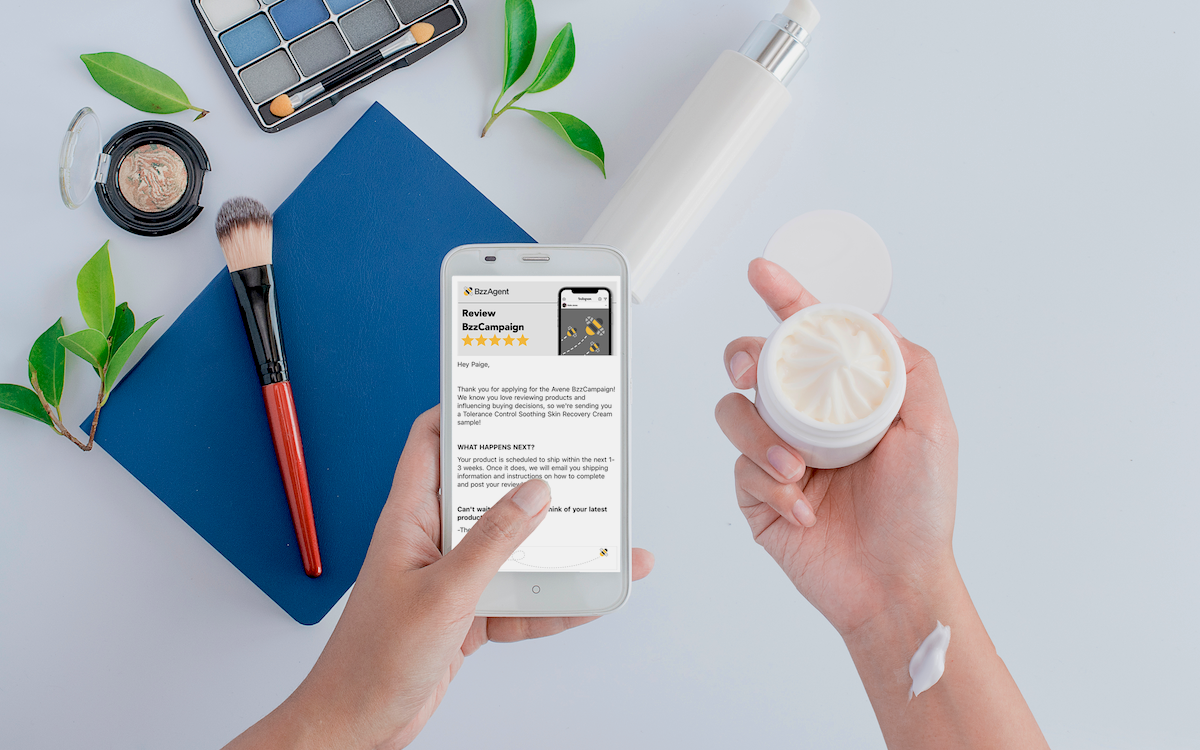- Product sampling is a common tactic brands and retailers rely on to generate quality review content quickly
- Consumers love it because it makes them feel special and exclusive
- But a phenomenal product sampling campaign will always incorporate specific key elements – all of which are covered here
- Due to the complexity, brands and retailers often rely on vendors to manage these campaigns for them
By now, the majority of brands and retailers recognize the huge role ratings and reviews play in the purchase journey. But in case you still need convincing, a recent survey found that ratings and reviews have actually become the top factor impacting purchase decisions, surpassing other elements including price, free shipping and brand.
What’s more, the presence of ratings and reviews is proven to drive bottom line results. Recently, we analyzed 1.5MM product pages across more than 1,200 brand and retailer sites throughout the entire year of 2020 and found there was a 120.3% lift in conversion when visitors interacted (think clicking, searching, filtering and sorting) with ratings and reviews.
Consumers have high expectations when it comes to reviews. For starters, they want plenty of reviews available for the products they’re considering. A third of consumers say that ideally, a given product should have more than 100 reviews!
Shoppers want to find fresh, recently-written reviews. Nearly three-quarters (71%) consider recency when reading reviews. And 51% say they’d be less likely to buy a product if all the reviews were over a year old.
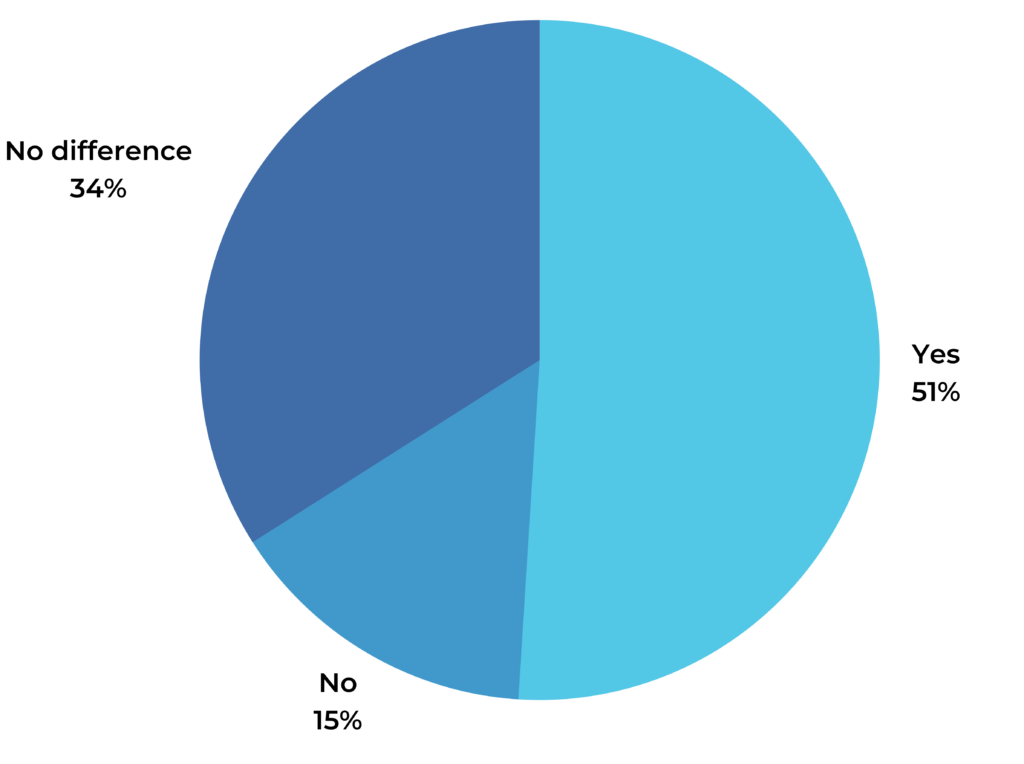
Brands and retailers must make it a priority to continuously generate a high volume of reviews for the products in their catalogs.
Product Samples Motivate Consumers to Write Reviews
Although most consumers — 99.9% to be exact — read reviews when shopping online (and 57% do so when shopping in a physical store location), far fewer write them on a regular basis. A recent survey focused on what motivates consumers to contribute user-generated content found that just over half of consumers write reviews more than once per month. The remainder submit this content far less frequently — if ever.
The good news is, there are certain strategies that can motivate more consumers to write reviews. One of those strategies is product sampling. In fact, 86% of consumers indicate that receiving a free sample would motivate them to write a review. That’s probably not terribly surprising. After all, who doesn’t like receiving things for free?
How Product Sampling for Reviews Works
The concept of product sampling isn’t a new one. In fact, it’s an age-old strategy employed by brands and retailers to get people to try a product — with the hope they’ll love it so much they’ll purchase it on their own when the sample runs out. For example, pre-COVID, a beverage brand might distribute free samples of a new product at the grocery store. Or a CPG brand may mail out samples of a new laundry detergent to try to get consumers hooked.
Product sampling for reviews is a similar concept — with a different end goal.
A brand sends out free samples of a product to a specific audience. The product can be as small as a travel-size toothpaste or as large as a vacuum cleaner. And it doesn’t have to be the product itself; it could also be a coupon or gift card that the consumer redeems for a free product in a store.
After the consumers have had a chance to try out the product, they’re asked to share their honest opinion by writing a review. Those consumers can also include a photo or video of the product in action as part of their reviews.
It’s a relatively simple strategy — but it works. Here at PowerReviews, we’ve found that 85% of our consumer community – BzzAgents to give them their proper brand name – that receive a free sample go on to write a review.
And while some may be concerned that the reviews are poor quality, this simply isn’t the case. We’ve found that reviews that result from a product sampling campaign are actually 83% longer than those captured via other methodologies.
The 9 Key Elements of a Great Product Sampling Campaign
Of course, simply sending out product samples doesn’t guarantee a high volume of reviews (or visual content, if that’s what you’re after). Instead, there are certain elements that are essential to a successful product sampling campaign.
Based on our extensive experience managing product sampling campaigns for brands and retailers of all sizes, here are the nine key components of a great product sampling campaign that yields a high volume of quality content.
1. A Solid Goal
The first step of any product sampling campaign is to determine your goal. Without a clear goal, it’ll be impossible to execute a successful campaign — and measure its success or failure.
So, think about what you hope to accomplish with a product sampling campaign. Here are a few goals we see frequently from our customers.
When new products are launched, brands typically invest heavily in digital marketing to drive traffic to the product pages. But if a shopper lands on a product page and there’s no user-generated content available, they’re a lot less likely to convert. In fact, nearly half of shoppers won’t purchase a product if there aren’t any ratings or reviews for it.
With product sampling, you can collect reviews prior to a launch. That way, reviews will be pre-populated when the product officially hits store (and digital) shelves.
If you’re launching a product that’s highly visual in nature (think cosmetics, apparel or home goods), you might also want to ask samplers to submit photos or videos of the product alongside their reviews. Research tells us that 85% of shoppers are more likely to purchase a product that has user-generated visual content, in addition to written text.
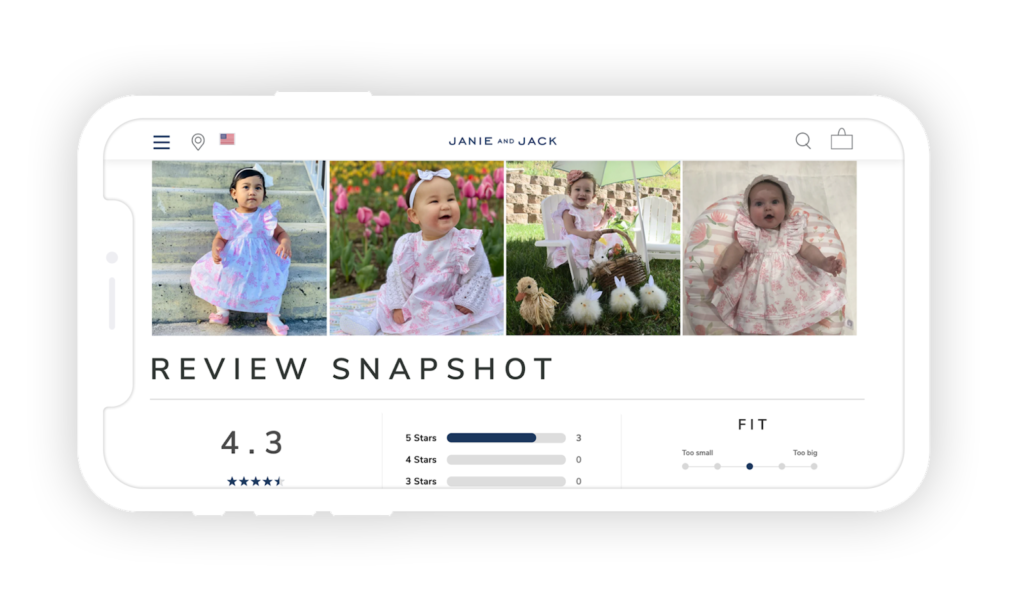
There are likely products in your catalog that could benefit from additional review coverage. For example, you might have product pages with high traffic, but low conversion rates. Displaying more reviews can help boost shoppers’ confidence — and increase the likelihood that they’ll convert.
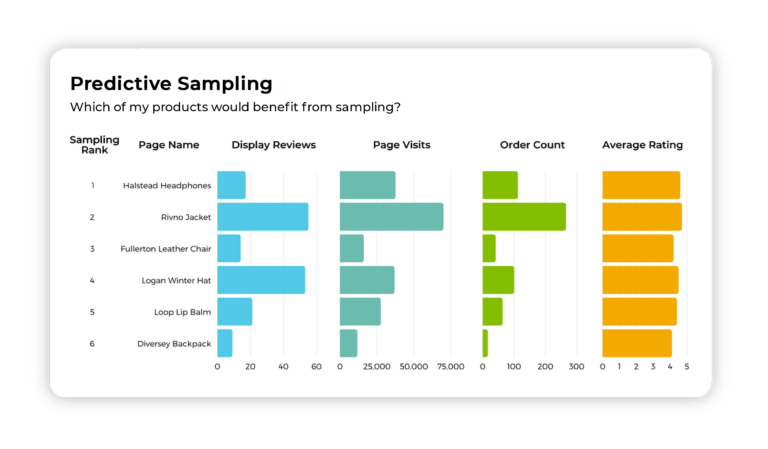
Or, you might have products with significantly fewer reviews than similar products from a competitor. A higher volume of reviews might be just the ticket to getting more consumers to choose your products over that of your competitors.
Remember: a third of consumers think that a given product should have more than 100 reviews. When you collect and display more reviews, shoppers are more likely to find content that’s relevant to their own unique needs.
You might have a product with a ton of reviews. But the thing is, all of the reviews were written months — or even years ago. That’s a problem, as a third of shoppers want to find reviews that are between a week and a month old. And 21% want to read reviews posted within the last week!
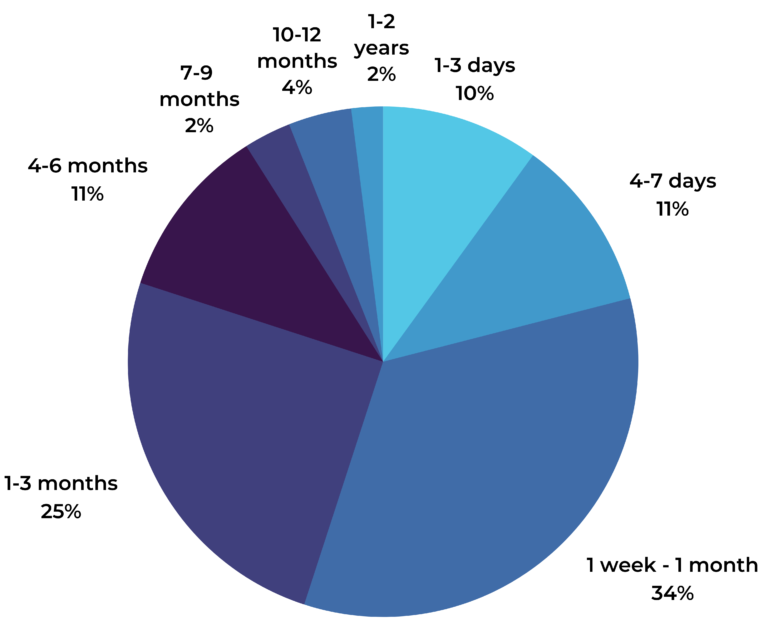
Product sampling is a great way to “freshen up” reviews for targeted products.
2. The Right Number of Samples
If you’re considering a product sampling campaign, you’re likely wondering how many samples you need to send out. There’s no “one-size-fits-all” answer here. It really depends on your campaign goal, as well as your budget.
First, you’ve got to determine the number of reviews (or pieces of visual content) you want from a given campaign.
For example, perhaps you want to generate 500 reviews prior to launching a new makeup product. Then, consider how many of your samplers will actually go on to write a review (here at PowerReviews, our sampling campaigns yield a 85% average review submission rate. That means out of every 10 samples sent, a brand or retailer can expect about 8.6 reviews. This is far higher than competitors, whose review submission rates are typically in the 40-60% range).
3. The Right Audience
It’s not an effective approach to send samples to a random group of consumers. For example, you don’t want to spend money sending makeup samples to consumers who don’t wear (and have absolutely no interest in) cosmetics. You’re better off throwing the samples into the trash!
Instead, you’ve got to ensure your samples go to the right audience. A great way to do that is to send a survey to potential samplers with questions relevant to the product to determine if they’re a good fit.
For example, if you’re doing a sampling campaign for a baby monitor, you’ll likely start by targeting adults aged 30-40. But don’t stop there! Instead, send these consumers a survey to determine whether they have a young child. If they don’t, they’ll have no use for your product — and probably won’t write a review (at least, not a relevant one).
Working with the right product sampling vendor is the best way to ensure your product samples get into the right hands.
These vendors typically have curated databases of consumers that represent a wide range of demographics (including age, gender and geographic location, among others) and niches (such as foodies and beauty enthusiasts).
That way, you can get your products into the hands of shoppers that meet your specific criteria.
Some product sampling partners will tout the size of their database. But be sure to ask them how engaged the consumers in their database are. A large database of consumers is meaningless if they’re not engaged and actively writing reviews!
4. A Means for Fulfillment and Distribution
Once you’ve determined how many samples you’ll send and who you’ll send them to, it’s time to get those samples in the mail. Sounds simple enough, right?
The reality is, manually distributing product samples is inefficient and time consuming when you handle it internally. This is especially true if you’re planning a high volume sampling campaign.
A better approach might be to partner with a product sampling partner who is equipped to handle your entire campaign — including distribution. Your only “to-do” as far as distribution goes should be to send a shipment of samples to the vendor; they handle the rest.
5. The Right Communication Cadence
The ultimate goal of a product sampling campaign is to generate as many reviews (or visual content) as possible. Of course, there will be some consumers who will submit content soon after receiving their sample. But that won’t be the case for everyone.
So, be sure to send regular communications to your samplers to ensure the highest collection rate possible.
For starters, include a letter in the product sampling package that reminds consumers to submit a product review — and details how to do so. Then, send reminder emails to those who haven’t yet submitted their review.
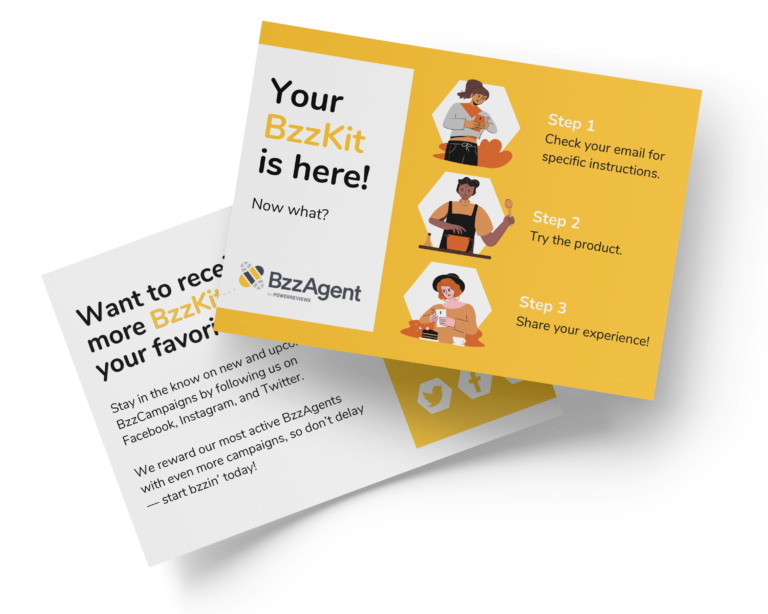
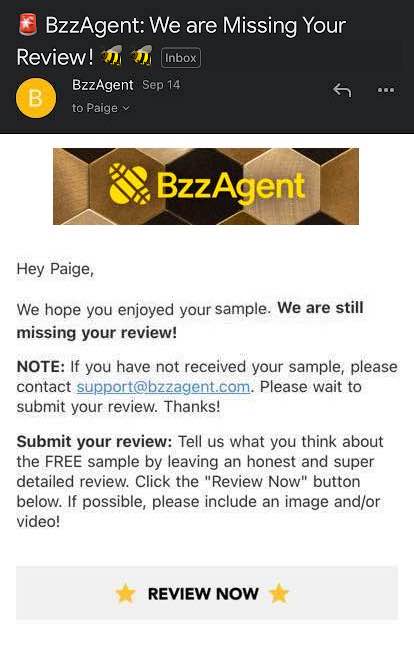
And don’t be afraid to send more than one reminder email. Nearly a third of consumers indicate they need to be asked two or even three times before they write a review.
In all of your communications, make it extremely clear exactly what you want the consumer to do. For example, if you want them to submit photos or a video alongside their written review, spell it out for them.
6. Tools to Measure Campaign Performance
Measuring the performance of your product sampling campaign is essential. If you don’t, there’s no way to determine if your campaign actually achieved what you set out to do. It’ll also be impossible to understand where your campaign fell flat — and identify ways to improve future campaigns.
But don’t wait until the campaign has wrapped up to measure your performance. Instead, check your progress throughout the campaign. That way, you can make real-time adjustments as needed to improve outcomes.
If you’re working with a product sampling vendor, be sure to ask what tools they provide to allow you to continuously measure campaign performance.
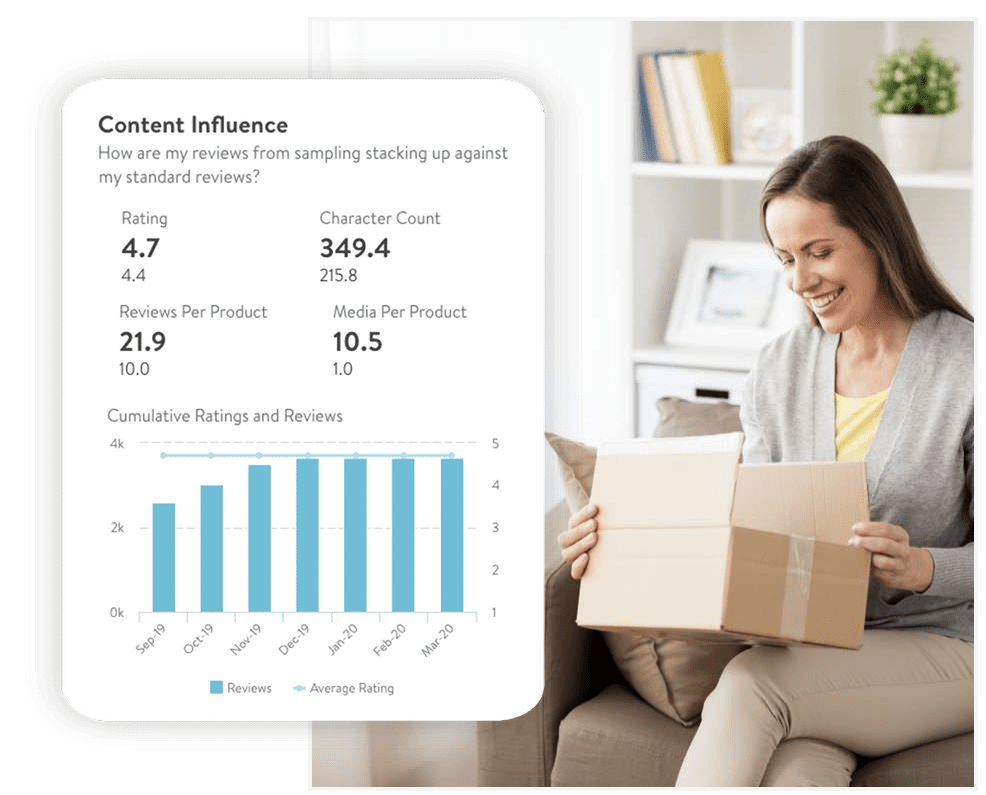
7. Tools to Identify Actionable Insights
Reviews generated from product sampling campaigns give brands and retailers unique insight into what consumers love (and don’t love) about a given product. These insights can be used to improve products and customer experiences.
For example, let’s say a beauty brand is launching a new face cream in the next few months. The brand executes a pre-launch sampling campaign so there are plenty of reviews in place when the product hits the shelves.
The brand analyzes the reviews and notices that there are several written by consumers with sensitive skin that indicate the product caused a rash. Armed with these insights, the brand reworks the product description to make it clear that the product isn’t a good fit for consumers with sensitive skin. And, the product development team gets to work creating a similar product for sensitive skin.
Reviews are a treasure trove of actionable insights. But the thing is, combing through each individual review to identify trends and uncover insights isn’t exactly effective or efficient.
Be sure to ask your product sampling partner about the reports and analytics that are available to you.
8. Authenticity and Transparency
Shoppers trust reviews because this content comes from others like them. In order to preserve that trust, brands and retailers executing product sampling campaigns must make authenticity and transparency a priority.
Of course, it’s important to moderate reviews that result from product sampling campaigns to ensure the content is authentic, written about the correct product, and free of slander and profanity. But reviews should never, ever be filtered out simply because they’re negative.
Negative reviews are an important tool that helps shoppers make better purchase decisions. In fact, 96% of consumers specifically seek out negative reviews at least sometimes. This content allows shoppers to easily identify the worst case scenario of a product — and then decide whether they can live with it.
What’s more, the presence of negative reviews actually helps you boost trust with shoppers. After all, nearly half (46%) of shoppers say they’re suspicious of products with a perfect five star rating.
In addition, be sure to display a badge or a small print disclosure alongside reviews that are generated as the result of a product sampling campaign. It’s an important way to maintain transparency — and meet FTC guidelines.
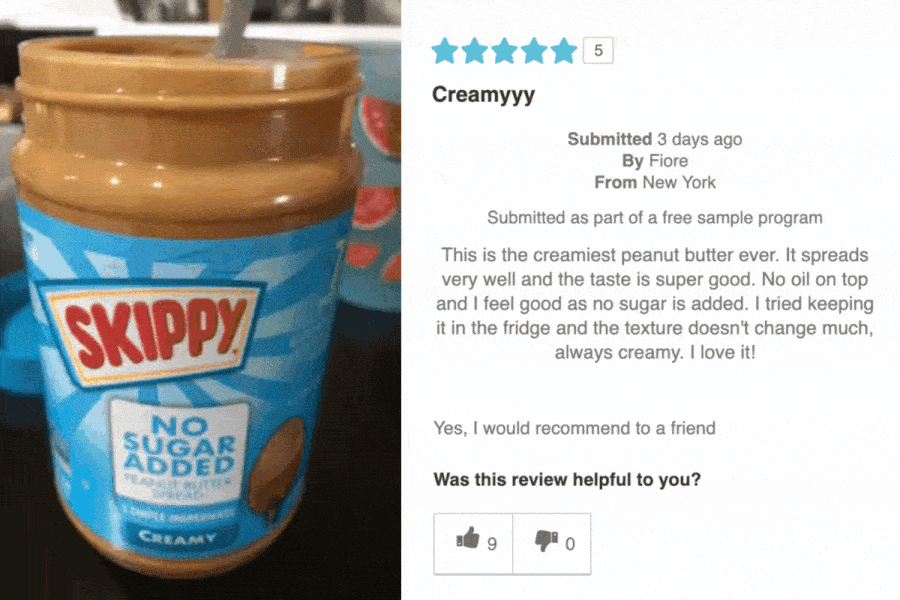
9. The Right Product Sampling Partner
It’s certainly possible to plan and execute a product sampling campaign on your own. But a great product sampling campaign has a lot of moving parts. And managing these moving parts is time consuming, with a lot of room for error.
The vendors you’re considering should have extensive expertise with product sampling, as well as the ability (and experience) to manage your entire campaign end-to-end.
In order to generate the best results, be sure to find a partner that has a highly engaged community and a high average submission rate. Also, ensure your chosen partner can execute quickly. Ideally, you should have reviews rolling in within four weeks of a project kickoff call.
Start Generating More Reviews with Product Sampling
More than ever before, consumers depend on reviews to make informed purchase decisions. In fact, a whopping 99.9% of consumers read reviews when shopping online at least sometimes. And 57% do so when shopping in brick-and-mortar stores.
Brands that consistently collect and display reviews are better positioned to meet customer expectations — and drive bottom line results. The pressure’s on to collect and display as many high quality reviews as possible.
If you’re looking for an effective strategy to generate more reviews, consider product sampling. It’s a simple, proven way to generate a high volume of high quality content — fast.

